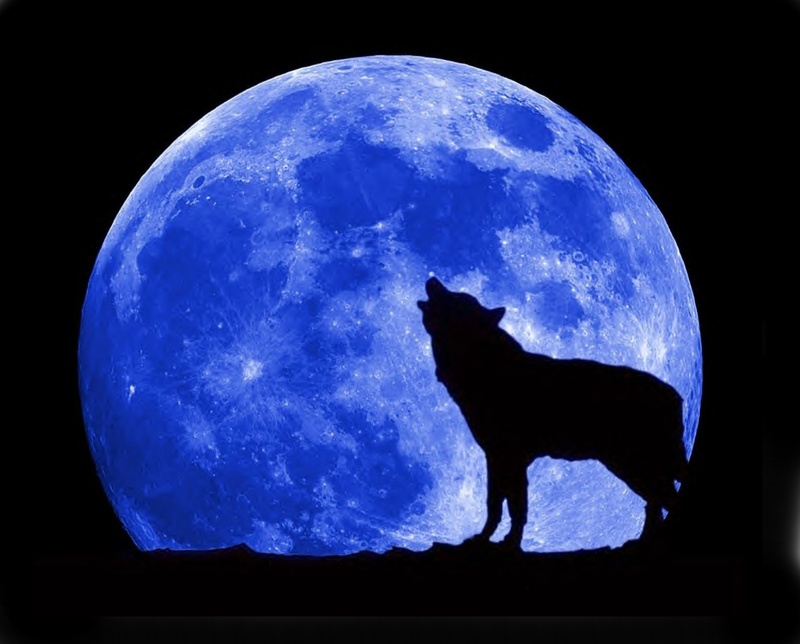I love maps, all kinds of maps. Whenever I travel by car, I
must have a road map because I always want to know where I am, relative to where I came from and where I'm going. Also, I want to know where on this map I get to eat.
Here's a map of the visible universe:
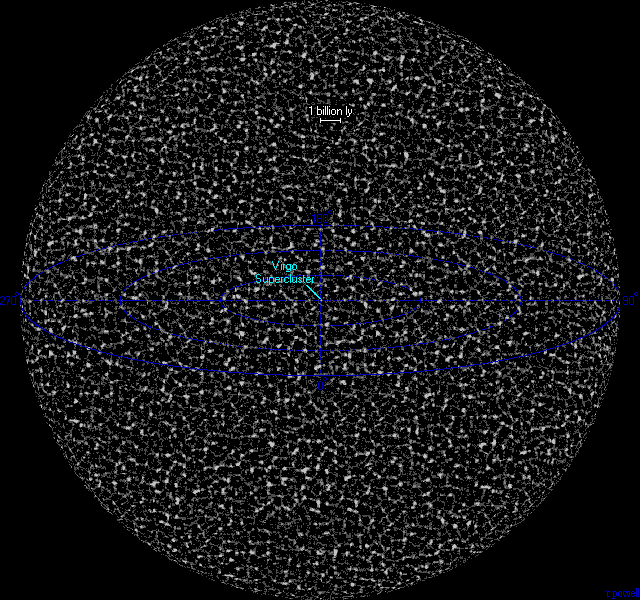
That little speck in the center, the Virgo Supercluster, is where we are, and the universe
looks like a sphere because we're in the middle of it and we can see only about 14.2 billion light years (
ly) in any direction. No doubt, there's a lot more stuff out past the sphere, but we can't see it--it's black--which is just an indication of our nearsightedness. Maybe the light out there, traveling at 186 million miles per second, hasn't had enough time to reach us, and, besides, we're probably not in the middle of the universe at all.
Now, I'm not traveling far away, but I still want to know where I stand. The Virgo Supercluster is chock full of smaller clusters which are each chock full of galaxies--yes, whole
galaxies, each full of stars and planets.
I don't know where they got the name "Virgo," but it's Latin for "virgin" and has nothing to do with the constellation Virgo, except that the stars which form Virgo are also inside the Virgo Supercluster, right here with us, and we can see them with the naked eye.

The constellation is supposed to be a virgin wearing a skirt, but even if you connect the dots, it may be difficult to locate in the night sky because it's no more than a stick figure, obscured by smaller stars all around, although this is nothing new. Virgins are always hard to spot, unless they're under the age of 16.
So, just for the fun of it, let's zoom in on the map--to the Virgo Supercluster:
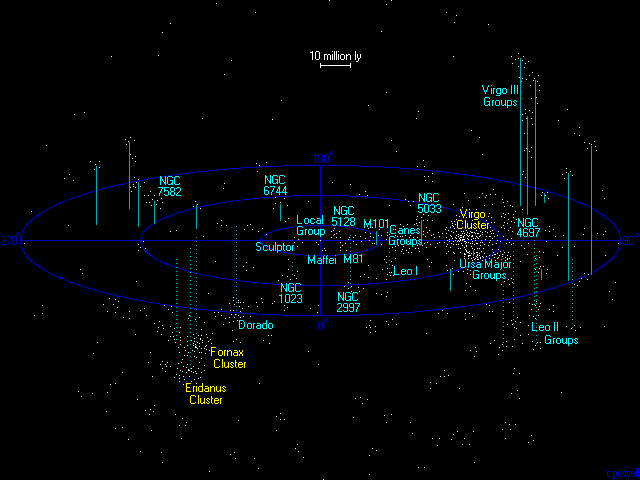
.
Only the biggest clusters in the Virgo Supercluster get their own names instead of numbers, but, of course, being us, we gave ourselves a name, a name not very colorful or exciting. We're called the Local Group, which sounds like a bunch of loiterers on the porch outside a general store, tilting back on chairs, smoking tobacco, shooting the shit, and passing judgement on random strollers, all for good fun. Of course, the map places us dead center, and, if we zoom in on the Local Group, we get this map:
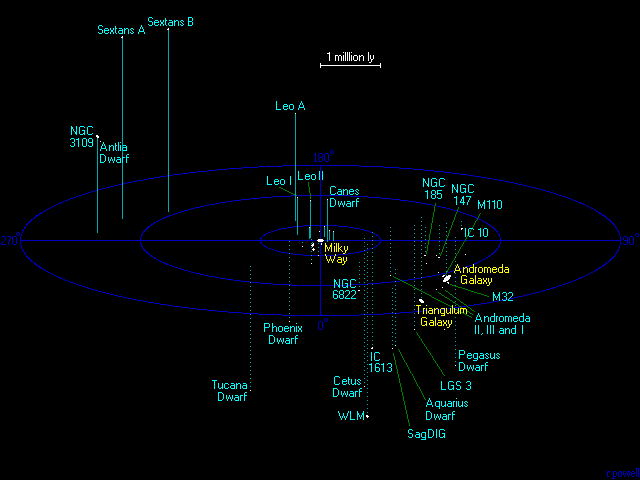
Naturally, our galaxy is in the center of the map. It's Home! The Milky Way! And, here's a pic of the Andromeda Galaxy, our neighbor, the most spectacular galaxy in the Local Group:

Finally--home sweet home--here's a rendering of our galaxy. The Milky Way!

The Milky Way is a spiral galaxy, forming a relatively flat disc full of stars, planets, etc., all spiraling toward the center. Our Sun is located in the Orion arm of the spiral, pretty far out from the center. Here's a telescopic picture of the center of the Milky Way galaxy taken from the Orion arm (that would be HERE, that would be US):

And another pic, supersensitive to light in the night sky:
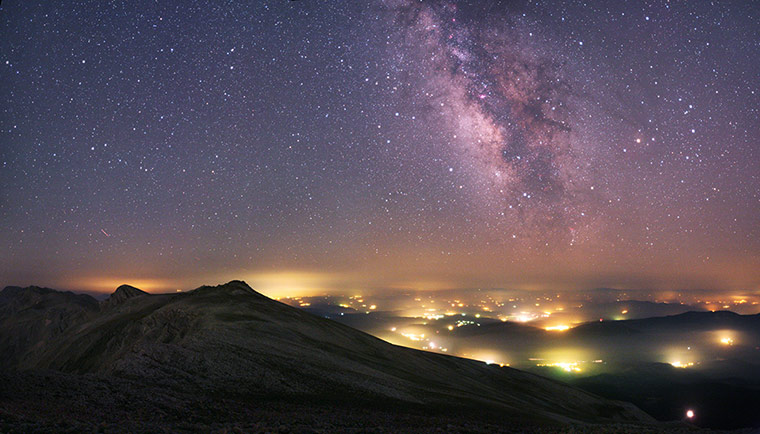
Is it awesome, or what? You can't see all the distant light with the naked eye, but, when you see that milky band across the night sky--billions of stars too far away to form the dots of light we call stars--you're looking at the dim light from all the stars in all the arms of our galaxy, seen from the the Orion arm of the Milky Way. You're actually looking along the flat plane of our disc-shaped galaxy, but the stars are too far away to look like specks--they just look like a milky trail across the sky (get it? "Milky Way").
The Sun and Earth are pretty far out from the center of the galaxy, thank God, because, at the center of the Milky Way sits an ominous black hole, a ball of matter so dense that it's super-gravity sucks all the nearby stars into itself, sucking so hard that even light can not escape. We can't see the black hole because it won't let light out, plus, it's surrounded by billions of little stars getting sucked into dark doom, making it look like a crowd of fireflies congregating around a bowl of honey.
But, don't worry, the super gravity won't get to us within the next few million years. You've got plenty of time to write your wills. Even your great-great grandchildren will live goofily along, mostly unaware of the colossal suction that is bound to turn our world into a compacted black speck, like a grain of sand in a dark desert, settled on the surface of a massive black ball.
Much, much later--in the end--when the whole galaxy is finally sucked into the black hole, the damned thing may even explode and start a whole new generation of stars, planets and a race or two of curious goof-offs like us.
But, I digress. Let's get back to maps.

Out here in the Orion arm of the Milky Way, we find--among billions--our favorite star, the Sun. We're so close to it that it warms us, makes our veggies grow, and gives us a great tan if we stretch out on a beach. It doesn't look much like a star to us, but it is one.
The planets rotating around the Sun are not often aligned as in this map, but it's a nice image to help us get our bearings--that's why I love maps, to get my bearings, to see where I stand, to get oriented. We're the third planet from the Sun, inside the asteroid belt and the orbits of a bunch of other planets.
Here's an actual photograph of our planet, Earth, taken by an astronaut on a mission to the Moon. It's the prettiest planet in our solar system, with the possible exception of Saturn.:

Now, we're getting somewhere. At the bottom of the photo, you can see the ice that covers Antarctica, and behind the white clouds in the upper left (northwest quadrant) you can see the continent of Africa, with Saudi Arabia just across the Red Sea. The Mediterranean Sea is just barely visible at the top left of the globe.
So, if you get on a sailboat in Africa and cross that blue ocean to the left (the Atlantic), tacking a little north around to the back of the globe, you would run smack into North America:

Thus to another map of North America:

And a highlight of my home, New Hampshire:
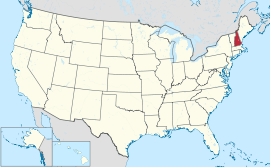
Wherein lies my hometown, Manchester, near the bottom of the state:
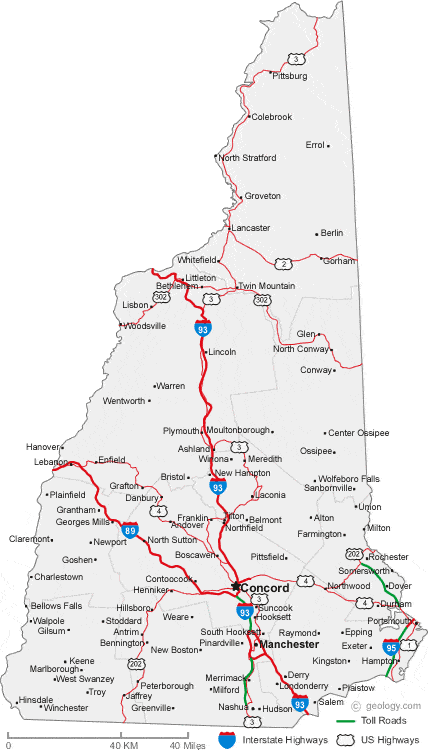
Which--on maps--shows roads and streets like this:
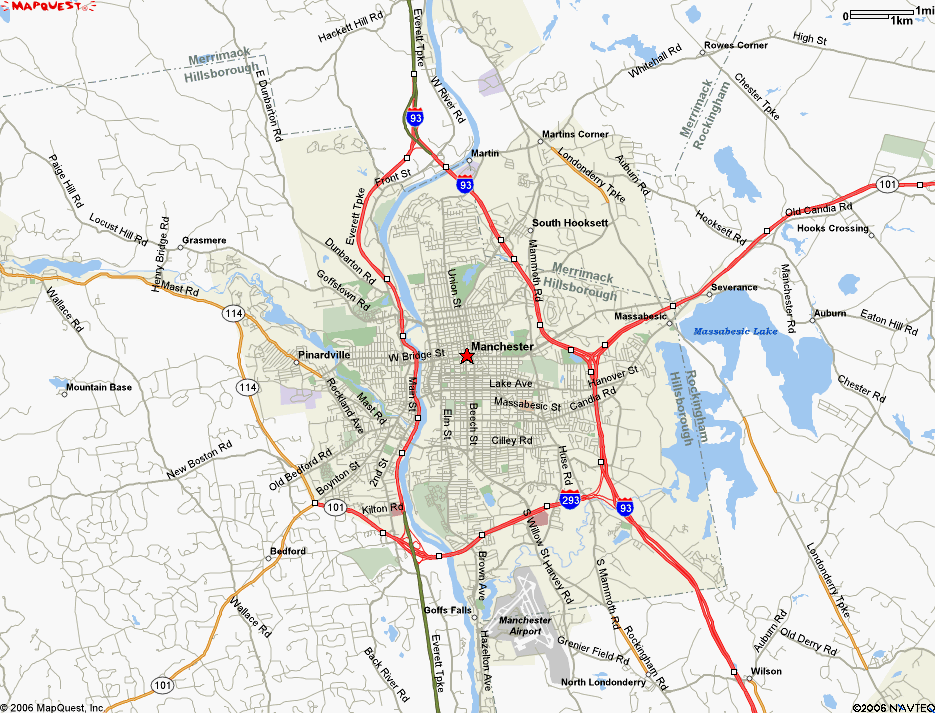
Thus, I can find my way to the huge Mall of New Hampshire, just off the intersection of Interstate 293 and South Willow St. (highlighted in purple).
Now, all I have to do is consult the map of the mall to get what I'm looking for:
Aha, I see a "You Are Here" arrow on the map. All I have to do is go straight, take a right, then a second right, then a left, and I'm there!
I order a supreme pizza with everything on it, and when I lift the lid to take a look--Wow! It looks remarkably like a map of the Universe. I swear the little speck of green pepper in the center resembles the Virgo Supercluster.
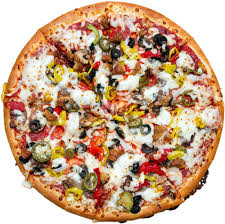
I feel like I'm Home. And I can eat the map!
I do love maps, especially when they're pizza..
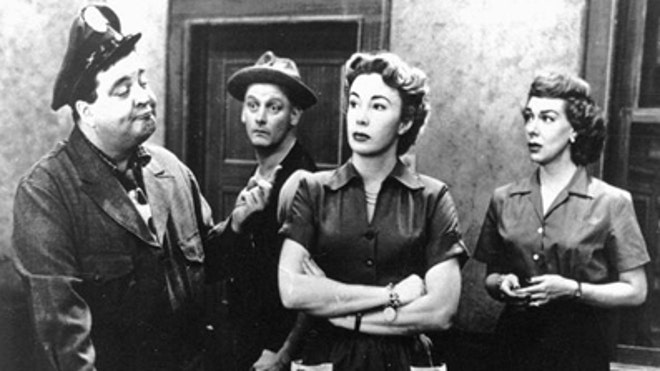




 .
.














